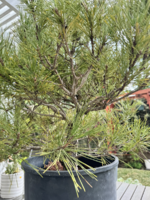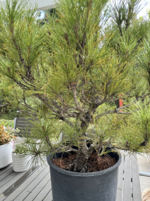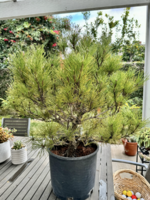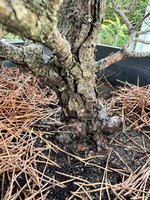wiggles15
Seedling
I picked up this Japanese Black Pine from House of Bonsai in Southern California. The nebari is about 3.5 inches and the tree is probably about 3.5 feet tall. In the late winter I'm planning to repot it into a grow box (probably 16"x16") with a better quality soil since it's basically in sand. Then I want to let it grow for a year or two before doing finer branch development.
There are a handful branches (both primary and secondary branches) that have 3-4 other branches growing from the whorl. My question is should I reduce these whorls to 2 branches to prevent reverse taper? Or should I just let them grow out and deal with them later?
If you have any other thoughts on what you would do with this tree in the late winter / early spring, I'd love to hear it!
There are a handful branches (both primary and secondary branches) that have 3-4 other branches growing from the whorl. My question is should I reduce these whorls to 2 branches to prevent reverse taper? Or should I just let them grow out and deal with them later?
If you have any other thoughts on what you would do with this tree in the late winter / early spring, I'd love to hear it!









